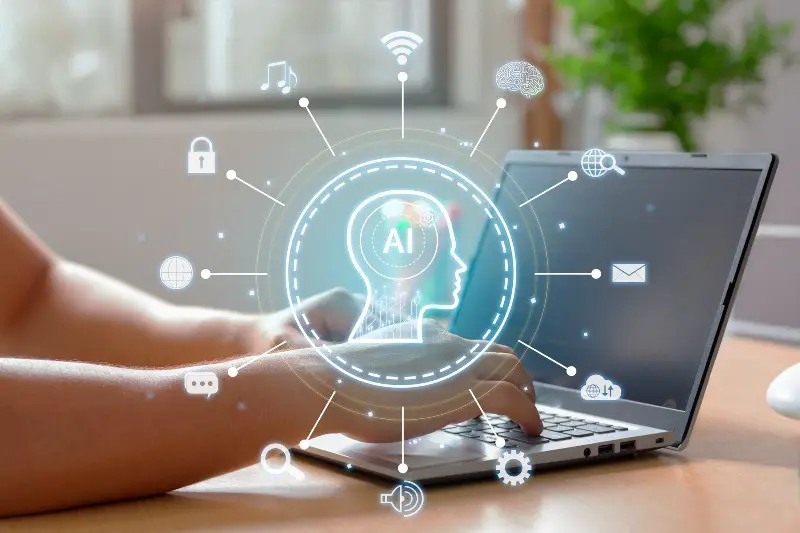Welcome to the world of Black Box AI! This term might sound complex and mysterious, but it’s an incredibly fascinating aspect of modern technology. Black Box AI refers to artificial intelligence systems where the internal workings are not entirely visible or understandable to us. It’s like having a super-smart robot that can solve problems and make decisions, but we can’t always tell exactly how it’s doing it. This concept might seem like something out of a science fiction movie, but it’s very much a reality in today’s tech-driven world.
In this blog post, we’re going to explore Black Box AI in a way that’s easy to understand, even if you’re just learning about technology. We’ll discuss how it’s used in finance, its importance for students and educators, its role in computer vision, and the vital topic of ethical AI. So, whether you’re a student, teacher, or just someone interested in technology, get ready to learn about the intriguing world of Black Box AI!
Finance
In the finance sector, Black Box AI is like a wizard with numbers. It analyzes huge amounts of financial data – such as stock market trends, economic indicators, and company performance – to make predictions or decisions. This is incredibly useful for people in finance because it helps them make better, faster decisions about where to invest money or how to manage financial risks.
However, the mystery behind how Black Box AI makes these financial decisions can sometimes be a concern. For example, if an AI system denies someone a loan, it might not be clear why that decision was made. This lack of transparency can be challenging in finance, where understanding the reasoning behind decisions is important for trust and accountability.
Students and Educators
For students and educators, Black Box AI is opening up new frontiers in learning and teaching. In classrooms, AI can help create personalized learning experiences, where each student gets lessons tailored to their individual needs and learning style. It can also assist educators in grading and analyzing student performance, saving them time and effort.
But there’s a flip side. The ‘black box’ nature of AI in education means that sometimes educators and students might not fully understand how the AI is making decisions about learning paths or grades. This can raise questions about fairness and accuracy, making it crucial for educators to balance AI use with human oversight and judgment.
Computer Vision
Computer vision is a fascinating application of Black Box AI. It’s all about giving computers and machines the ability to ‘see’ and interpret visual information from the world around them. This technology is used in everything from facial recognition software to self-driving cars. It allows machines to process and understand images and videos in a way that mimics human vision.
However, the way Black Box AI learns to recognize patterns and interpret visual data can sometimes be unclear. This can be a challenge, especially in situations where understanding the AI’s ‘thought process’ is important for safety and reliability, such as in autonomous vehicles or security systems.
Myths vs. Facts about Black Box AI
Myth 1: Black Box AI is Always Inaccurate
Fact: Black Box AI can be incredibly accurate and effective. The term ‘black box’ refers to the lack of transparency in how decisions are made, not necessarily the accuracy of those decisions.
Myth 2: Black Box AI Is Too Complex to Understand
Fact: While Black Box AI is complex, researchers and developers are working hard to make it more understandable. Advances in AI explainability are helping to demystify these systems.
Myth 3: Black Box AI Doesn’t Require Human Input
Fact: Despite its advanced capabilities, Black Box AI still relies heavily on human input, both in terms of the data it learns from and the oversight it requires to function effectively and ethically.
FAQ Section
Q1: What is Black Box AI?
Black Box AI refers to AI systems where the internal decision-making process is not transparent or easily understood. It’s like having a machine that can make smart decisions, but we don’t fully see how it arrives at those decisions.
Q2: Why is Black Box AI important in finance?
In finance, Black Box AI is used to analyze complex data and make predictions about market trends and investment opportunities. Its ability to process large amounts of data quickly makes it a valuable tool, though its opaque nature can be challenging for transparency.
Q3: How does Black Box AI impact education?
Black Box AI impacts education by providing personalized learning experiences and aiding in administrative tasks. However, the lack of clarity on how decisions are made by AI systems can raise questions about fairness and accuracy in educational settings.
Q4: What is computer vision in Black Box AI?
Computer vision in Black Box AI involves teaching machines to interpret and understand visual data from the world. It’s used in various applications, from facial recognition to autonomous vehicles, but understanding how these systems make decisions is an ongoing challenge.
Q5: What is ethical AI?
Ethical AI refers to the practice of designing, developing, and using AI systems in a manner that is morally right and respects human values. It involves considerations like fairness, transparency, and accountability, especially in Black Box AI systems.
Google Snippets
Black Box AI
Black Box AI is a type of artificial intelligence where the decision-making process is not easily visible or understood. It’s widely used in industries such as finance and technology, offering powerful data analysis capabilities.
AI in Education
AI in education is transforming teaching and learning, offering personalized educational experiences and efficient administrative tools. The role of Black Box AI in this field is growing, though understanding its decision-making is important.
Computer Vision
Computer vision is a field where AI is used to enable machines to interpret and analyze visual data. Black Box AI plays a significant role in advancing this technology, though it presents challenges in terms of transparency and understanding.
Black Box AI Meaning from Three Different Sources
Technology News Site: Black Box AI refers to complex AI systems whose internal logic and decision-making processes are not fully transparent, presenting both potential and challenges.
Educational Tech Blog: In educational technology, Black Box AI is used to describe AI systems that aid in learning and assessment but whose decision-making processes are not completely clear or understood.
Science Journal: Black Box AI is characterized by its ability to perform tasks or make decisions based on data analysis without a clear explanation of how these decisions are made internally.
Did You Know?
- The term “Black Box” in Black Box AI originally comes from aviation, where flight recorders are called black boxes because their contents are not immediately accessible or understood.
- Black Box AI systems are capable of processing more data in a day than a human could in a lifetime, making them incredibly powerful for tasks like predictive analytics and pattern recognition.
- The emerging field of “Explainable AI” aims to make AI more transparent and understandable, addressing one of the main challenges of Black Box AI.
In conclusion, Black Box AI is a significant and fascinating aspect of modern technology, impacting sectors like finance, education, and computer vision. While it offers immense potential for innovation and efficiency, it also brings challenges in terms of transparency and ethical use. As we continue to integrate AI into various aspects of our lives, it’s crucial to focus on developing AI that is not only powerful but also responsible and beneficial for everyone.
References
- Explainable AI that uses counterfactual paths generated by conditional permutations of features. This method is used to measure feature importance by identifying sequential permutations of features that significantly alter the model’s output. The paper discusses the evaluation strategy of comparing the feature importance scores computed by explainers with the model-intern Gini impurity scores generated by the random forest, which is considered as ground truth in the study.
- Thinkful offers insights on how to address the “black box” problem in AI through Explainable AI (XAI) and transparency models. They discuss techniques like Feature Importance Analysis, Local Interpretable Model-agnostic Explanations (LIME), SHapley Additive exPlanations (SHAP), Model Distillation, and Decision Rules, which are designed to make AI models more interpretable and transparent. This is especially important in applications where decisions can have far-reaching consequences, such as healthcare or finance
- Superb AI‘s blog discusses the challenges of the reliability of AI and its adoption into society, given the opaque nature of black box models. The widespread use of AI technologies presents issues related to data bias, lack of transparency, and potential infringement on human rights. The article addresses how Explainable AI is crucial for building AI systems that are not only powerful but also trustworthy and accountable.





